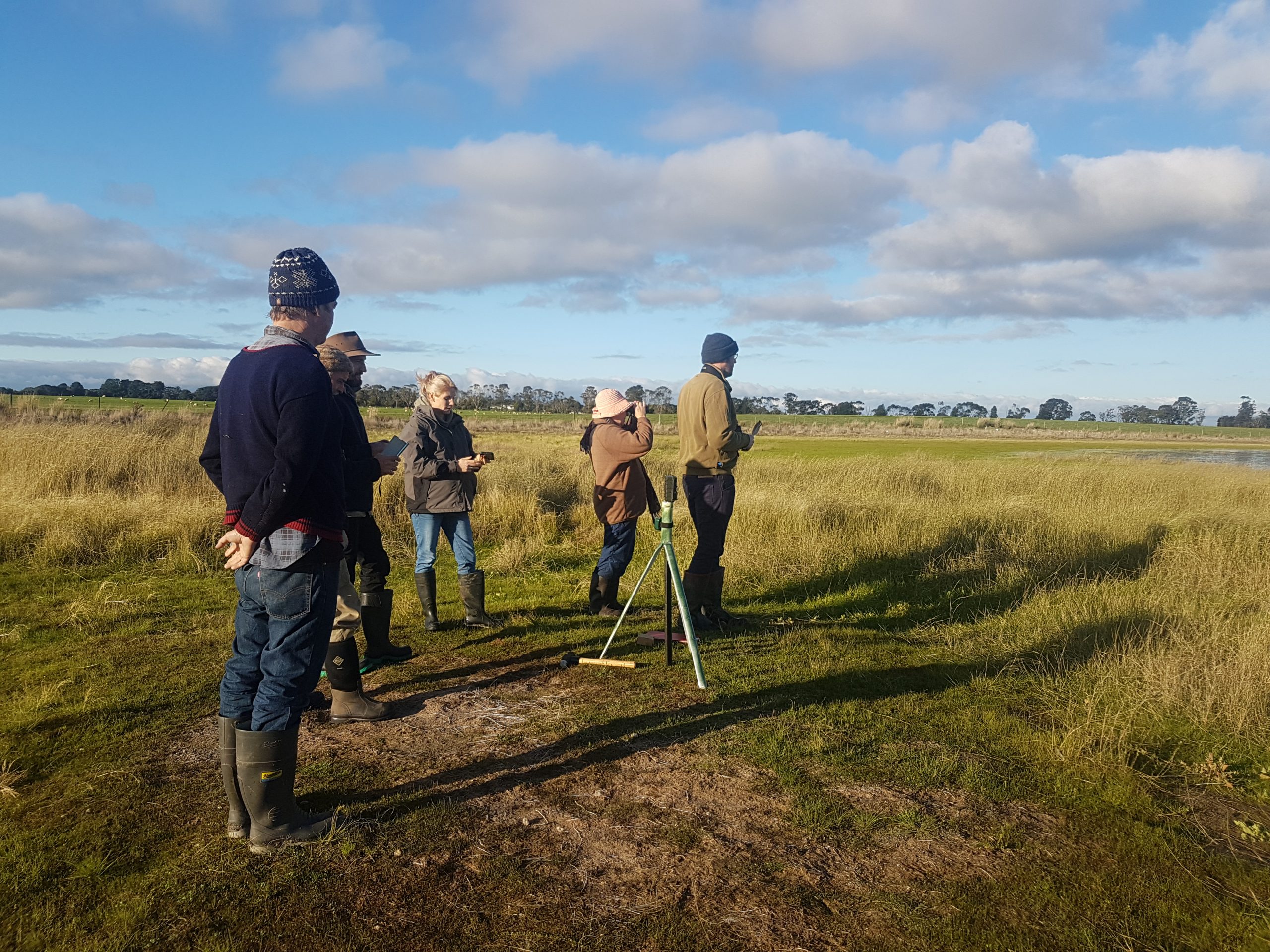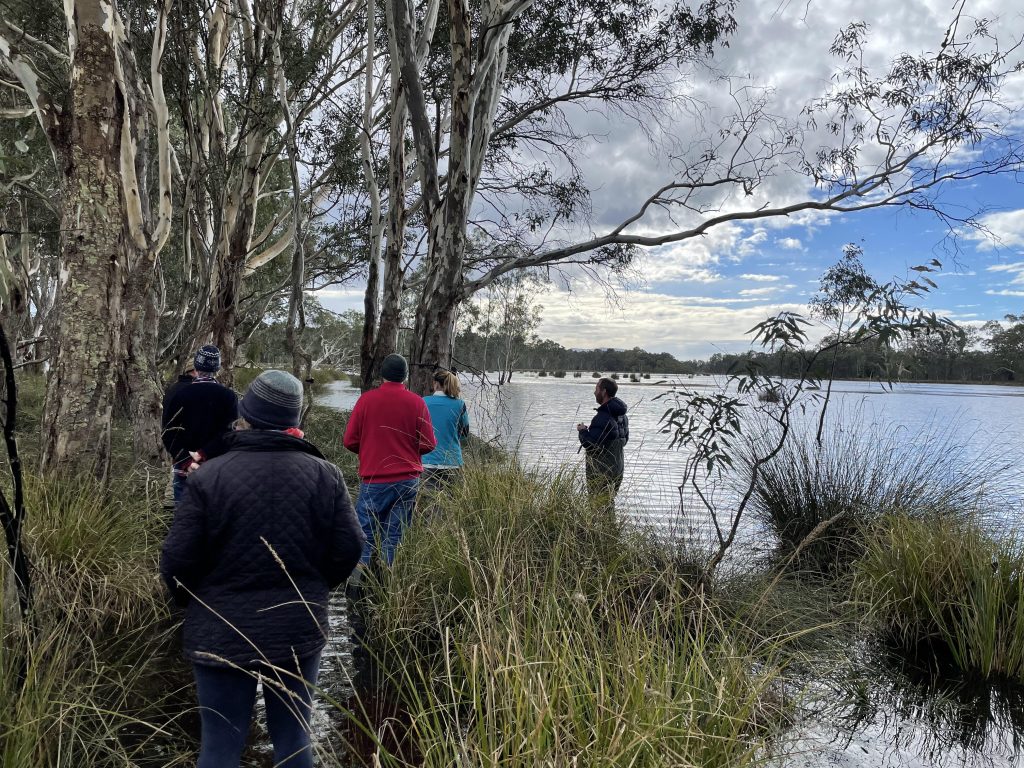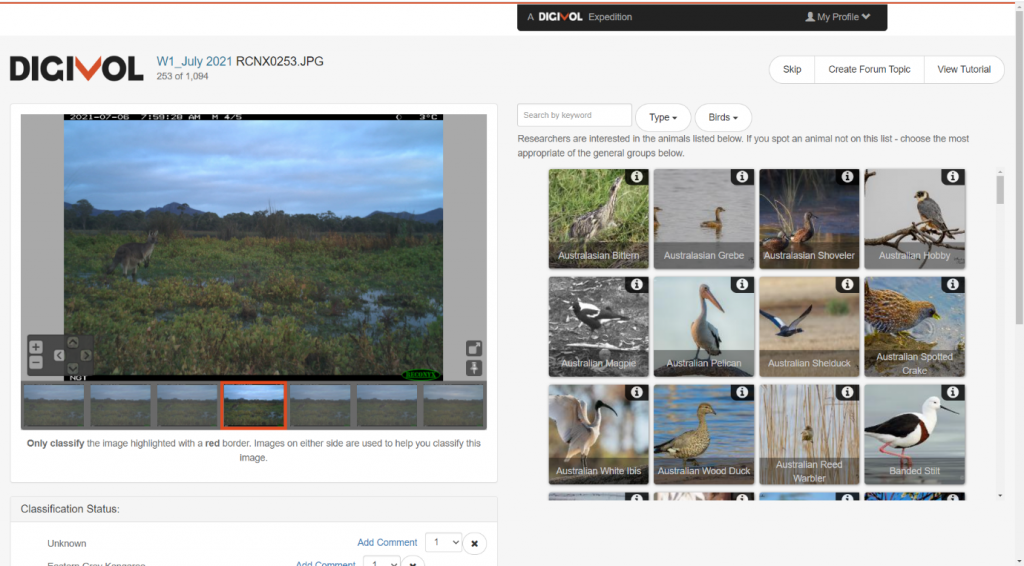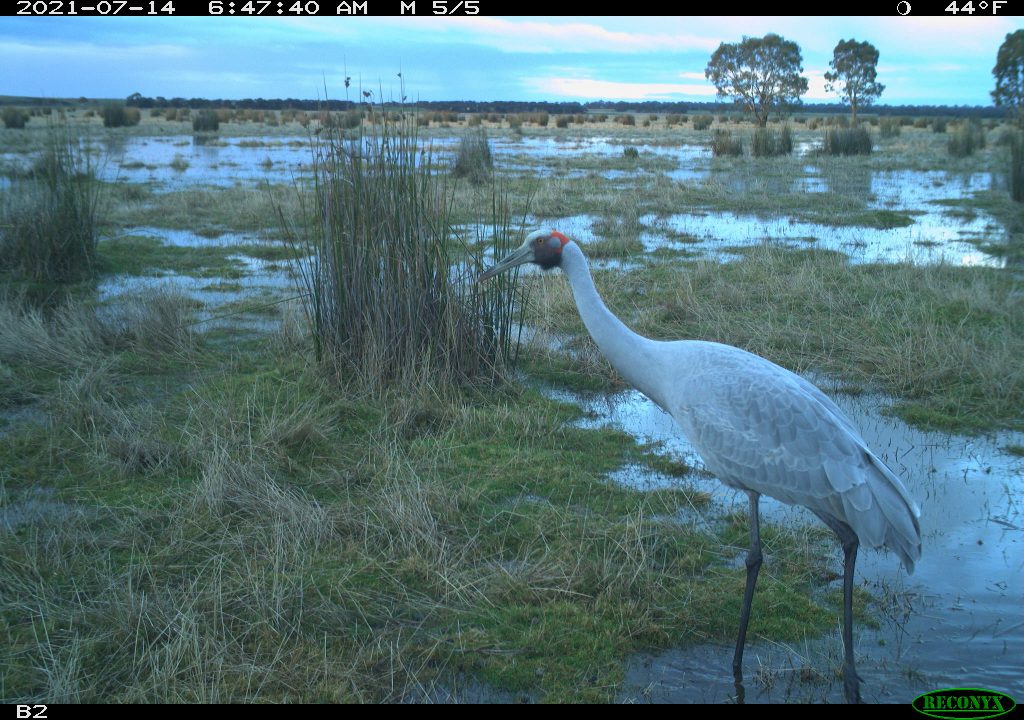Grampians remote monitoring – The wetlands fill as the fun begins!
At the end of July, Lachie and Tom met with an eager group of volunteers to complete the first round of data retrievals for our remote monitoring project in the Grampians. Field cameras and AudioMoth sound recorders had been deployed a month prior at various sites across Walker Swamp, Green Swamp, Gooseneck Swamp and Brady Swamp (you can read more about the project here). The transformation of the sites in the intervening period was pretty dramatic, following a significant amount of rain. Batteries and SD cards were swapped over and the gear redeployed for another month of data collection.
The project has attracted interest from over 30 prospective volunteers, some of whom are based as far away as Melbourne and Adelaide. The remote technology allows anyone to contribute to the citizen science program, by logging on to online platforms and assisting with the sorting and processing of audio and visual data. We have also established a core group of volunteers that will assist with the monthly tasks of downloading the data from the field equipment.


The field camera images have been uploaded to a platform called DigiVol (devoped by the Australian Museum), where volunteers can now log on and start the process of identifying fauna. Upon signing up, volunteers are taken through a tutorial that guides them through the whole process. The audio data has also been uploaded to a bio-acoustics program called Arbimon, where volunteers can confirm the presence/absence of key species (e.g. frogs, cryptic birds) from their calls. It will be exciting to see what species we uncover over the coming weeks!


The “New Tech Volunteering: Novel citizen science for Grampians wetlands” project is supported by the Victorian Government through the Volunteering Innovation Fund.

